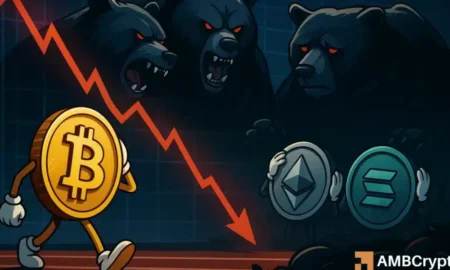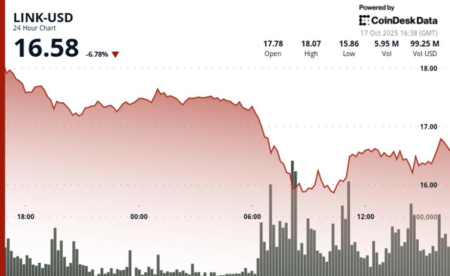Ethereum Price Outlook: Analyzing Short-Term Trends and Key Levels
As we navigate through the dynamic landscape of cryptocurrency, Ethereum (ETH) continues to capture the attention of both investors and developers. With the current focus on its short-term outlook, it’s essential to examine key support and resistance levels, trading patterns, and the overall market sentiment surrounding this leading blockchain platform.
Support Levels: Vital Signs for Recovery
The short-term outlook for Ethereum hinges primarily on its ability to defend critical support levels. According to the 1-day chart, the $3,900 to $4,000 range is crucial for ETH’s recovery prospects. Holding this support zone is essential for maintaining bullish trends and any hopes of a market resurgence. Investors should keep a close eye on price movements, as a fall below this level could signal more significant retracement risks.
Resistance Levels: Overhead Challenges
On the flip side, Ethereum faces significant resistance levels that may prove challenging for bulls. Key Fibonacci retracement levels at $4,250 and $4,472 will test the market’s strength, with traders looking for potential breakout opportunities at these points. Additionally, the local high of $4,755 serves as another critical marker that needs to be breached for a more bullish market structure. Understanding these resistance zones is crucial for forecasting ETH’s short-term price movements.
Developer Activity: Ethereum’s Ecosystem Dominance
In the broader context, Ethereum remains a frontrunner in developer engagement and innovation. Reports indicate that in 2025, the Ethereum ecosystem was the most active in terms of new and ongoing development, outpacing its nearest competitor, Solana (SOL). This level of engagement contributes significantly to investor confidence, revealing a commitment to ongoing enhancements and updates within the Ethereum network.
Investor Sentiment: Exchange Outflows
A key indicator of investor sentiment towards Ethereum lies in the exchange outflows. The ETH Exchange Supply Ratio on Binance has dipped to 0.033, reflecting a multi-month low and indicating that investors are moving their tokens into self-custody. This trend suggests a positive outlook, as long-term holders are increasingly securing their assets, potentially anticipating future price increases. Moreover, the announcement of Bhutan’s National Digital Identity based on the Ethereum network has provided a further boost, aligning investor hopes with real-world applications of blockchain technology.
Warning Signs: Slow Demand and Market Sentiment
Despite the optimistic signs, Ethereum bulls must remain cautious. Analysis of the weekly timeframe shows a bullish swing structure, yet recent dips in On-Balance Volume (OBV) raise concerns about demand elasticity. Even though a significant weekly price close below the $4,000 resistance hasn’t occurred yet, the weakening OBV suggests a slowdown in upward momentum. The Relative Strength Index (RSI) remaining below the neutral 50 indicates that bearish sentiment may linger unless stronger buying pressure materializes soon.
Future Projections: What Lies Ahead
Looking ahead, market trajectories are closely tied to Ethereum’s performance around critical support and resistance levels. A weekly close below $3,712 would signal increasing bearish pressure, potentially driving the price down to $3,100. On the daily chart, a recent drop below $3,815 has shifted the market structure toward bearish territory, complicating recovery efforts. Traders are therefore advised to monitor the $4,200 to $4,400 resistance zone carefully, as ETH’s ability to maintain price action above the $4,000 psychological support will determine the market’s direction in the coming weeks.
In conclusion, while Ethereum’s fundamentals and developer activity offer a robust backdrop for price growth, the immediate outlook is fraught with challenges. By keeping a close watch on critical support and resistance levels, as well as market sentiment indicators, investors can navigate these turbulent waters with greater awareness.

















